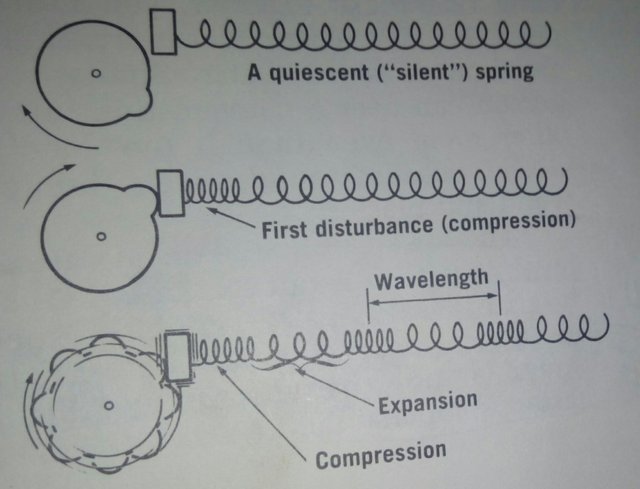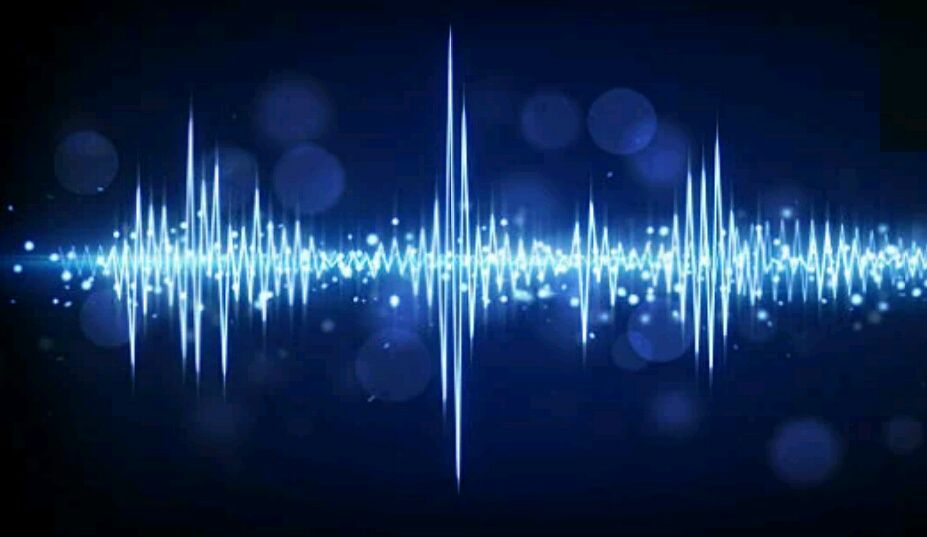The sound we hear give us pleasure, provide information, annoy us or even cause physical or emotional harm. it is important, therefore, that we learn about the physics as well as the environmental and other practical aspects of sound.
To understand how sound is produced, just consider its opposite - Silence . Think of the quietest occasion of your life. Perhaps standing in the wood after a snow on a windless winter day would be such an instance.
Certainly, you would not think
of an occasion on which you
were moving whether walking,
running or riding, because motion
itself produces sound. In fact,
one relationship between motion
and sound is suggested by the use
of the word`Still` which means both
motionless and quiet.
Motion is related to energy - any moving body has an energy of motion that depends on its speed; the faster it moves, the more kinetic energy it has. Since sound is related to motion and motion to energy, it is reasonable to think that sound is related to energy; and indeed, so it is.
How is sound transmitted from a source such as a bell to a receiver such as your ear? We note that when a bell is struck, it vibrates. When the vibration stops, so does the sound. If the bell is struck in a vacuum, it will vibrate but no sound can be detected. From this, it can be deduced that the motion of a bell somehow moves the air, which then moves some receiving device in the ear. This transfer of sound energy through the air occurs in the form of a wave..
Water waves are disturbances that alter the normal water level so as to make it high in some places and lower in others. Sound waves produce a different type of disturbance. Instead manifesting itself as crests and troughs, the sound wave is a succession of compressions and expansions that disturb the normal density of the medium (such as the air) in which they are propagated. This type of wave is called an elastic wave . it can be illustrated below by the actions of a coiled spring.

Imagine that a bump on a rotating wheel hits the end of a spring twice per second. As each bump hits the left end of the spring, the coils there are squeezed together. Then, as the bump moves away, the compression coils expand and then squeeze together the nearby coils. This adjacent set of coils does the same thing - it expands again and passes the compression further along down the spring.
Meanwhile, other compressions have been started and all these compressions (and the expansion between them) travel along the spring. This series of moving compressions and expansions is the elastic wave . The speed of the waves depends on the properties of the spring (not on the rate of rotation of the wheel).
Air is a springy material; a squeezed balloon snaps back when released. Therefore, elastic waves can be propagated in Air. This propagated is registered as sound when the frequencies of the waves lie within the range that the ear can detect. Elastic eaves can be propagated ain other media.
Thus, if you swim under water and you bang two rocks together, you hear will hear a noise because elastic waves are propagated through the water. Similarly, a person can hear a conversation in another room even though the door is closed, because sound travels through wood and plaster.
The speed of sound in air at sea level at 0°C is about 331 m/sec (1086 ft/sec). Any object such as an airplane, that travels slower than sound is said to be subsonic; one that travels faster than sound is said to be supersonic. Elastic waves travel faster in denser media: 1500 m/sec in water and about 4000m/sec in wood.
MUSICAL SOUNDS
A musical composition is impossible to describe in words or symbol; it carries an essence of its own. Even when we speak about a single note, we use nebulous, hard-to-define words such as quality, depth, richness.
Suppose, for example, that we had ten (10) different pianos, ranging from a cheap toy to a quality concert grand piano and that we struck the middle C on each. The fundamental pitch of each note would be the same, but the sound of the better instrument would be somehow fuller & richer. Middle C played on any piano is carried by a sound wave with a fundamental frequency of 262 vibrations per second.
But in addition to the fundamental frequency, the string vibrates to produce sounds called Overtones, with frequencies two, three, four, five, six or more the fundamental frequency.
If we compare two different instruments, say a piano and a clarinet, and listen to the middle C on both, the fundamental frequency but the number and loudness of overtones are different, the quality of the sound would be different.
When many instruments operate together, each playing different notes, the resultant sound waves contains many different fundamental frequencies, each mixed with its specific overtones. The Agglomeration, which we call Music , is a complex superimposed mixture of many pure sinusoidal sound waves.
NOISE

image credit
The concept of noise is often related to the idea of randomness, but there are other connotations. The complete physical description of a given sound cannot establish whether you, as an individual, will or will not like it.
If you don't like that sound, that sound is noise. We now have two erratic definition of noise:
- any erratic, intermittent, or statistically random oscillation, and
- any unwanted sound.
The concept of unwanted sound seems straightforward enough, but it does not teach us how to predict which sounds will be disliked.
After all, a given sound may be music to one person but noise to another, pleasant when soft but noise when loud,acceptable for a short time but noise when prolonged, intriguing when rhythmic but noise when randomly played, reasonable when you make it but noise when someone else makes it.
image credit
Of all the attributes that distinguish between wanted and unwanted sound, the one that we consider the most significant is LOUDNESS .
Loudness of sound have been known to be dangerous and harmful in more ways than one. The louder a sound is, the more annoying the effect is on the listener. Therefore, the louder a sound is, the more likely it would be considered as noise.


Congratulations @ebrook! You have completed some achievement on Steemit and have been rewarded with new badge(s) :
Click on any badge to view your own Board of Honor on SteemitBoard.
To support your work, I also upvoted your post!
For more information about SteemitBoard, click here
If you no longer want to receive notifications, reply to this comment with the word
STOPDownvoting a post can decrease pending rewards and make it less visible. Common reasons:
Submit